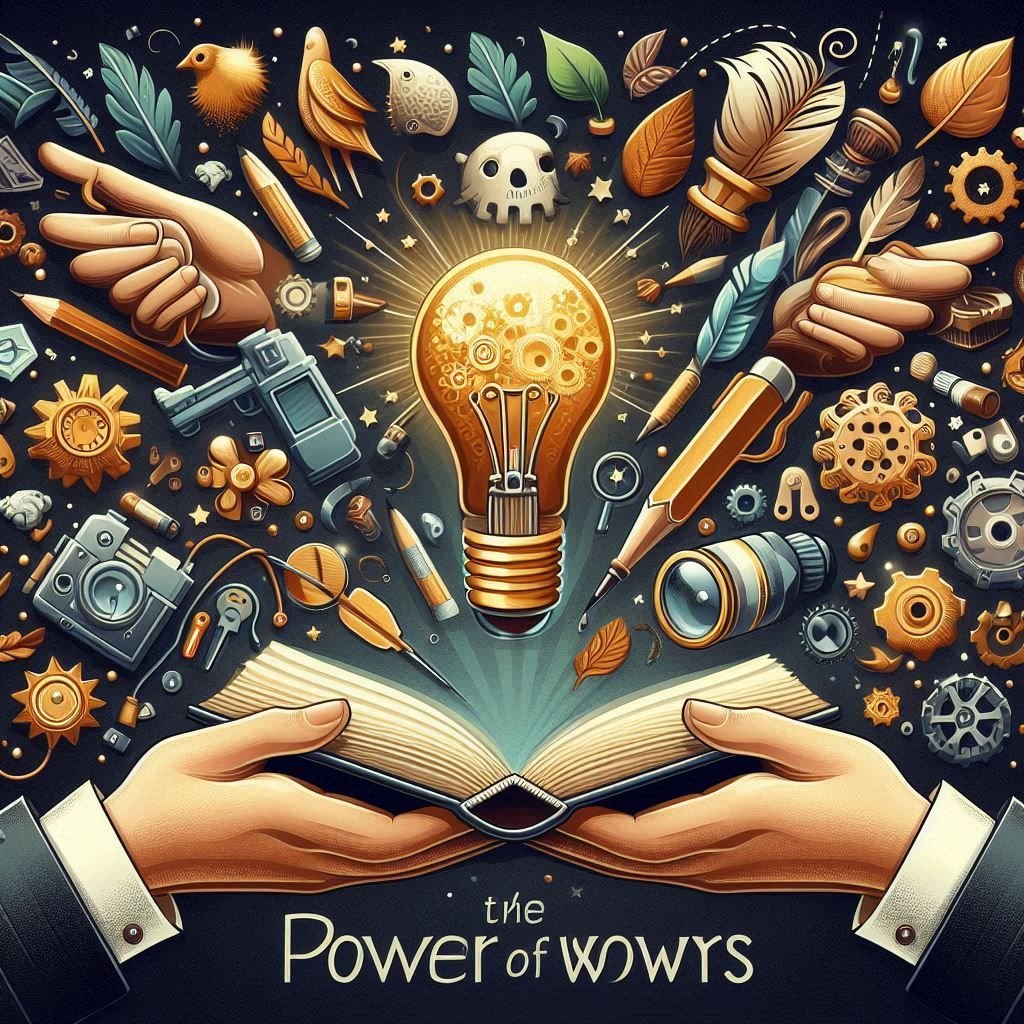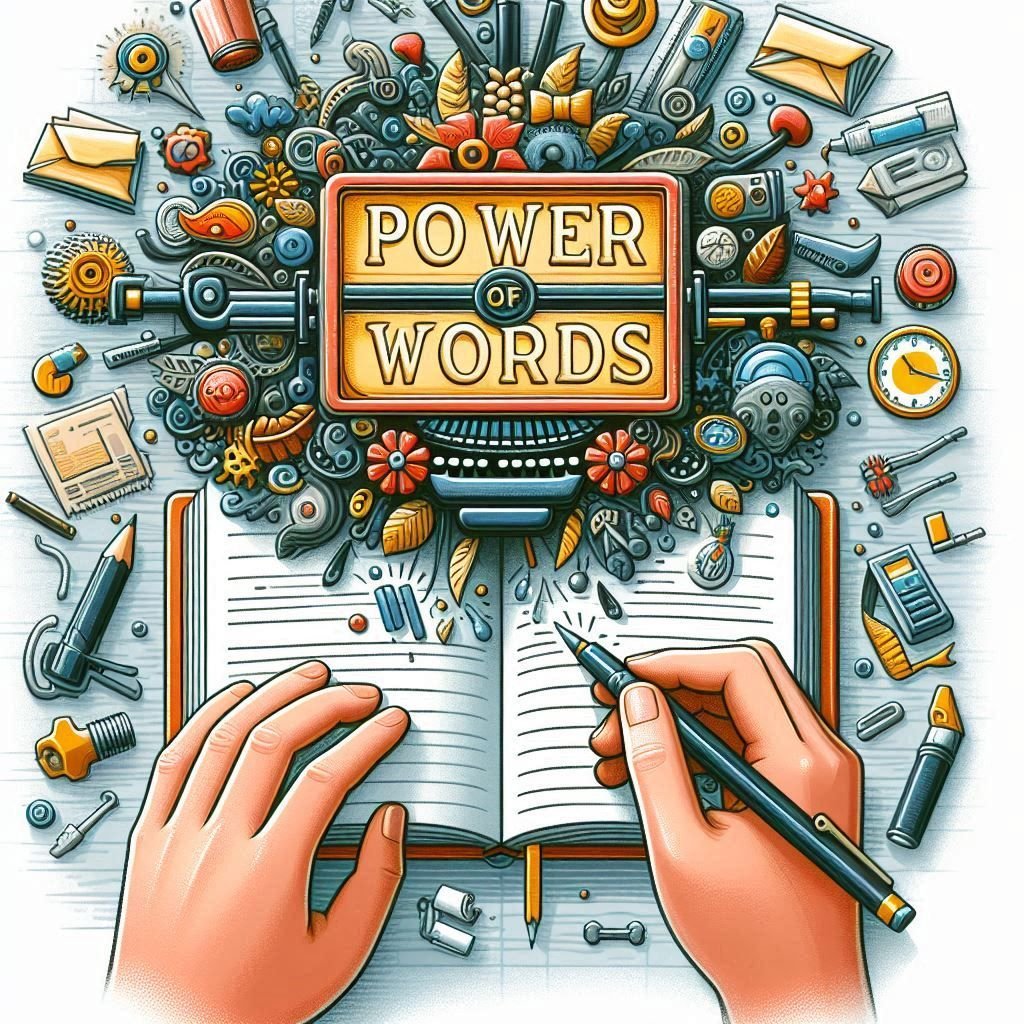
The Power of Words: Enhancing Your Writing Skills
Introduction
Writing is an essential skill that has the power to influence, inspire, and communicate ideas effectively. Whether you are crafting an essay, writing a blog post, or drafting an email, the words you choose can make a significant impact. Enhancing your writing skills can open doors to new opportunities and improve your ability to convey your message clearly. In this article, we will explore various techniques to elevate your writing and make your words more impactful.
Introduction to Basic Concepts
Understanding fundamental concepts is crucial for grasping more complex ideas. Whether it’s in science, technology, or any other field, a strong foundation makes advanced topics more accessible. Learn more about the importance of basics from Khan Academy.
The Importance of a Strong Foundation
A strong foundation in any subject ensures that you can build on your knowledge efficiently. Just as a building needs a solid base, your understanding must be rooted in the fundamentals. Discover how foundational knowledge supports learning on edX.
Core Principles in Different Fields
Different fields have their own set of core principles that guide further study and practice. For instance, in mathematics, understanding arithmetic is essential before moving on to algebra. Similarly, in programming, knowing basic syntax is crucial before tackling complex algorithms. Explore core principles in various subjects at Coursera.
Learning Methods and Tools
Effective learning methods and tools can significantly enhance your grasp of the basics. Interactive tools, visual aids, and practical exercises are invaluable for reinforcing foundational knowledge. Find useful learning methods and tools on Udacity.
Applying Basic Knowledge
Applying basic knowledge to real-world situations helps solidify your understanding and makes learning more engaging. Practical applications provide context and relevance, making it easier to remember and use what you’ve learned. Read more about applying knowledge at LinkedIn Learning.
Overcoming Common Challenges
Everyone faces challenges when learning new concepts. Identifying and overcoming these obstacles is key to mastering the basics. Common issues include lack of motivation, difficulty understanding abstract concepts, and forgetting information. Find strategies to overcome learning challenges on MindTools.
Success Stories and Exemplary Cases
Numerous successful individuals attribute their achievements to a solid understanding of the basics. From tech giants like Microsoft and Google to groundbreaking scientists and artists, mastering the basics has paved the way for innovation and excellence. Explore these success stories on Forbes.
Core Principles in Various Fields
| Field | Core Principles | Resources |
|---|---|---|
| Mathematics | Arithmetic, Algebra, Geometry | Khan Academy Math |
| Programming | Syntax, Data Structures, Algorithms | Codecademy Python |
| Science | Scientific Method, Basic Chemistry, Basic Physics | Coursera Science |
Learning Methods and Tools
| Method | Description | Resources |
|---|---|---|
| Interactive Tools | Hands-on learning with interactive simulations and exercises | BrainPOP |
| Visual Aids | Charts, diagrams, and videos to explain concepts visually | YouTube Education |
| Practical Exercises | Real-world problems and projects to apply knowledge | Project Learn |
Expanding Your Vocabulary
Expanding your vocabulary is an essential aspect of personal and professional development. A rich vocabulary enhances communication skills, boosts confidence, and opens up opportunities in various fields. This article will guide you through effective strategies to expand your vocabulary and make your language more vibrant and precise.
1. The Importance of a Rich Vocabulary
A robust vocabulary allows you to express yourself more clearly and accurately. It improves your ability to communicate complex ideas and emotions, making your speech and writing more effective. A rich vocabulary is also linked to better reading comprehension and academic success.
2. Read Regularly
One of the most effective ways to expand your vocabulary is by reading regularly. Reading a variety of materials such as books, newspapers, and magazines exposes you to new words and phrases. Make a habit of noting down unfamiliar words and looking up their meanings.
For further reading on the benefits of reading, visit Harvard Health Blog.
3. Use a Thesaurus
A thesaurus is a valuable tool for finding synonyms and discovering new words. When you come across a word you use frequently, look it up in a thesaurus to find alternative words that can add variety to your vocabulary.
Explore more about thesauruses at Merriam-Webster Thesaurus.
4. Practice Using New Words
To make new words a permanent part of your vocabulary, you need to use them in your daily conversations and writing. Practice incorporating new words into sentences and try to use them in appropriate contexts to reinforce your memory.
Learn more techniques for practicing new words at ThoughtCo.
5. Engage in Word Games
Word games such as Scrabble, crosswords, and online vocabulary quizzes can be a fun way to learn new words. These games challenge your brain and help you discover and remember new vocabulary.
Check out some engaging word games at The Guardian.
6. Join a Vocabulary Group
Joining a vocabulary group or a book club can provide a supportive environment for learning new words. These groups often involve discussions and activities that promote vocabulary building.
Find out more about the benefits of joining a vocabulary group at The New York Times.
7. Use Vocabulary Apps
There are numerous apps available that can help you expand your vocabulary. These apps often include word lists, quizzes, and games that make learning new words engaging and convenient.
Explore top vocabulary apps at Educational App Store.
8. Keep a Vocabulary Journal
Maintaining a vocabulary journal can be an effective way to track and review new words. Write down the words you encounter along with their meanings, usage, and example sentences. Regularly reviewing your journal will reinforce your memory and help you retain new vocabulary.
Learn more about maintaining a vocabulary journal at FluentU.
9. Attend Workshops and Seminars
Workshops and seminars on language and communication skills can provide valuable insights and techniques for expanding your vocabulary. These events often feature expert speakers and interactive sessions that enhance your learning experience.
Discover upcoming workshops and seminars at Eventbrite.
10. Consistency is Key
Consistently applying these strategies will gradually expand your vocabulary. Dedicate a few minutes each day to learning new words and integrating them into your daily life. Over time, you’ll notice a significant improvement in your language skills.
Read more about building consistency in learning at Psychology Today.
Crafting Compelling Headlines
Introduction to Crafting Compelling Headlines
Headlines are the gateway to your content; they play a crucial role in attracting readers and engaging them with your material. A compelling headline not only grabs attention but also convinces readers to dive deeper into your content. In this article, we’ll explore the key elements of crafting effective headlines, supported by industry insights and expert advice.
1. The Importance of Headlines
Headlines are essential for capturing the reader’s attention and setting the tone for the content. According to HubSpot, effective headlines can increase click-through rates by up to 500%. This underscores the significance of crafting headlines that not only attract attention but also convey the essence of your content.
2. Key Elements of a Compelling Headline
| Element | Description | Example |
|---|---|---|
| Clarity | Headlines should be clear and specific to convey the main idea of the content quickly. | “How to Boost Your SEO in 2024” |
| Emotion | Effective headlines often evoke emotion to connect with the reader. | “The Ultimate Guide to a Stress-Free Life” |
| Benefit | Highlighting a benefit provides value to the reader. | “Save $500 with These Budgeting Tips” |
Understanding these key elements can help you craft headlines that resonate with your audience. For more insights, check out CopyBlogger‘s comprehensive guide on headline writing.
3. Techniques for Crafting Effective Headlines
There are several techniques you can employ to create compelling headlines:
- Use Numbers: Numbers grab attention and make headlines more specific. For instance, “5 Easy Steps to Improve Your Writing” is more engaging than “Steps to Improve Your Writing.”
- Ask Questions: Headlines that ask a question can spark curiosity. For example, “Are You Making These Common SEO Mistakes?” encourages readers to learn more.
- Incorporate Power Words: Words like “Ultimate,” “Proven,” and “Secrets” can make headlines more enticing. For more examples, see Neil Patel‘s article on power words.
Applying these techniques can significantly enhance the effectiveness of your headlines. For further reading, The Balance Small Business offers additional tips on crafting effective headlines.
4. Examples of Successful Headlines
Here are some examples of headlines that have proven to be successful:
- Headline 1: “How I Lost 50 Pounds in 3 Months” – This headline is specific and promises a transformative result.
- Headline 2: “The Top 10 Ways to Save Money on Groceries” – Incorporates a list format and provides clear value.
- Headline 3: “Why Your Marketing Strategy Isn’t Working and How to Fix It” – Addresses a common problem and offers a solution.
For more examples and case studies, visit Forbes‘ article on headline tips.
5. Testing and Refining Headlines
To ensure your headlines are effective, testing is crucial. Use Optimizely or Unbounce to run A/B tests and determine which headlines perform best. Regularly refining your headlines based on performance data can lead to better engagement and higher click-through rates.
Structuring Your Content
Structuring Your Content: A Comprehensive Guide
Structuring your content effectively is essential for delivering a clear, engaging, and informative message to your audience. This article explores the key aspects of content structuring, providing actionable tips and insights to enhance your content’s readability and impact.
1. Importance of Content Structure
A well-structured content layout not only improves readability but also enhances SEO and user engagement. Proper structuring helps in guiding your audience through the content seamlessly, making it easier for them to grasp key points and take action. According to Search Engine Journal, effective content structure can significantly boost your website’s search engine ranking.
2. Key Elements of Content Structure
To create a compelling and organized piece of content, consider incorporating the following elements:
Headings and Subheadings
Headings and subheadings break your content into digestible sections, making it easier for readers to scan and find information. Use HubSpot’s guidelines for creating effective headings that capture attention and improve readability.
Introduction
An engaging introduction sets the stage for your content, highlighting what readers can expect and why it’s relevant. According to Content Marketing Institute, a strong introduction can significantly increase reader retention.
Body
The body of your content should elaborate on the main points, providing detailed information and examples. Structure your body content using bullet points, numbered lists, and short paragraphs to enhance readability.
Conclusion
Summarize the key takeaways and include a call-to-action (CTA) to encourage readers to engage further. Neil Patel emphasizes the importance of a clear CTA in guiding readers toward the desired action.
3. Using Tables to Organize Information
Tables are a powerful tool for presenting complex information in a clear, organized manner. They help in comparing data, displaying statistics, and summarizing key points. Here’s an example table:
| Element | Purpose | Best Practices |
|---|---|---|
| Headings | Guide the reader through the content | Use H1 for titles, H2 for main sections, and H3 for subsections |
| Bullet Points | Highlight key points | Keep lists concise and relevant |
| Tables | Display and compare data | Ensure clarity and readability |
4. Enhancing Readability with Visual Elements
Incorporating visual elements such as images, infographics, and videos can make your content more engaging. According to Venngage, visual content can increase user engagement and help in conveying complex information more effectively.
5. SEO Considerations
Structuring your content with SEO in mind is crucial for improving visibility and attracting organic traffic. Ensure that you use relevant keywords, meta descriptions, and internal linking strategies. For more tips on SEO-friendly content structuring, refer to Moz.
Using Active Voice
Active voice is a grammatical structure where the subject of the sentence performs the action of the verb. This form of writing is direct, clear, and engaging. It contrasts with passive voice, where the subject receives the action. For instance, in the active voice sentence “The cat chased the mouse,” the subject (the cat) is performing the action. This approach is often preferred in writing because it enhances readability and immediacy.
Benefits of Using Active Voice
Utilizing active voice in writing offers several benefits. It improves clarity by specifying who is doing what, making sentences more direct. According to Writing Commons, active voice sentences are generally more engaging and easier to understand. They also tend to be shorter and more to the point, which is particularly valuable in content writing and academic writing.
How to Identify Active Voice
To identify active voice, look for the following structure: subject + verb + object. For example, in the sentence “The chef prepared the meal,” “the chef” is the subject who is performing the action of preparing, and “the meal” is the object receiving the action. For more details, visit ThoughtCo for a comprehensive guide on distinguishing between active and passive voice.
Examples of Active Voice
Here are a few examples of sentences in active voice:
| Active Voice Sentence | Passive Voice Equivalent |
|---|---|
| The teacher explains the lesson. | The lesson is explained by the teacher. |
| The company launched a new product. | A new product was launched by the company. |
| The dog bit the mail carrier. | The mail carrier was bitten by the dog. |
For further examples, check out eNotes, which provides additional context and exercises.
Common Mistakes to Avoid
When writing in active voice, common mistakes include overusing the same structure or neglecting the importance of clarity. For instance, “The company was launching the new product” is less clear than “The company launched the new product.” To avoid these pitfalls, refer to The Balance Careers for tips on maintaining active voice effectively.
Tips for Writing in Active Voice
1. **Be Direct**: Use straightforward language and avoid unnecessary words. Writing Academy suggests focusing on the subject-verb-object structure to keep sentences clear.
2. **Edit Ruthlessly**: During revision, identify passive voice constructions and rephrase them. Refer to Purdue OWL for guidance on editing techniques.
3. **Practice Regularly**: Practice writing in active voice through exercises and prompts. The Grammar Book provides helpful exercises to improve your writing style.
Incorporating Storytelling
Stories have the power to captivate and connect with readers on an emotional level. Incorporating storytelling elements into your writing can make your content more relatable and memorable. The Storytelling with Data blog offers insights and techniques for effective storytelling in writing.
Editing and Proofreading
Editing and proofreading are crucial steps in the writing process. They help in identifying and correcting errors, improving clarity, and refining your style. Tools like Hemingway Editor and ProWritingAid can assist in enhancing your writing by providing detailed feedback.
Seeking Feedback
Receiving constructive feedback from peers or mentors can provide valuable insights into your writing. Join writing communities or workshops to share your work and gain diverse perspectives. Websites like Scribophile and Wattpad offer platforms for writers to connect and critique each other’s work.
Table: Writing Enhancement Resources
| Resource | Description | Link |
|---|---|---|
| Grammarly | Grammar and punctuation checker | Grammarly |
| Purdue OWL | Online writing lab with guides and tools | Purdue OWL |
| Merriam-Webster | Dictionary and thesaurus | Merriam-Webster |
| CoSchedule | Headline analyzer tool | CoSchedule |
| APA Style Guide | Guidelines for structuring writing | APA Style Guide |
| Hemingway Editor | Tool for editing and improving readability | Hemingway Editor |
| ProWritingAid | Writing improvement tool | ProWritingAid |
| Scribophile | Writing community for feedback | Scribophile |
| Wattpad | Platform for sharing and critiquing writing | Wattpad |

FAQs: The Power of Words
1. Why is it important to enhance writing skills?
Enhancing writing skills is crucial because it allows you to communicate more effectively and persuasively. Whether for professional, academic, or personal purposes, strong writing skills can help you convey your ideas clearly and impactfully. Effective communication is key in nearly every aspect of life, making it essential to continually improve your writing.
2. How can I expand my vocabulary?
Expanding your vocabulary involves consistent reading, using a thesaurus, and engaging with word games. Reading diverse materials such as books, articles, and blogs introduces you to new words and contexts. Utilizing resources like Merriam-Webster and Dictionary.com can also aid in learning new words and their meanings.
3. What are some tools to help improve grammar and punctuation?
There are several tools available to help improve grammar and punctuation. Grammarly is a popular choice, offering real-time grammar and punctuation checking. ProWritingAid provides detailed feedback on various aspects of writing, including grammar, style, and readability.
4. How can I make my writing more engaging?
To make your writing more engaging, use storytelling techniques, write in an active voice, and structure your content effectively. Stories can captivate readers and make your writing more relatable. Writing in an active voice creates more direct and vigorous sentences, while good structure, with headings and bullet points, enhances readability. Tools like the CoSchedule Headline Analyzer can help in crafting compelling headlines.
5. What are some good practices for editing and proofreading?
Good practices for editing and proofreading include taking a break before reviewing your work, reading aloud, and using editing tools. Taking a break helps you return to your writing with fresh eyes. Reading aloud can help identify awkward phrasing and errors. Tools like Hemingway Editor highlight complex sentences and suggest improvements, making your writing clearer and more concise.
6. Where can I find feedback on my writing?
Receiving feedback is essential for improving your writing. Joining writing communities or workshops can provide constructive criticism and diverse perspectives. Online platforms like Scribophile and Wattpad offer spaces where writers can share their work and receive feedback from peers.
7. How does storytelling improve writing?
Storytelling enhances writing by making it more engaging and memorable. It helps in creating a connection with the readers, making your content more relatable. Incorporating elements of storytelling, such as characters, settings, and plots, can transform mundane information into compelling narratives. Resources like Storytelling with Data provide valuable insights into effective storytelling techniques.
8. What is the benefit of using active voice in writing?
Using active voice in writing makes your sentences more direct and dynamic. It clarifies who is performing the action, making the sentence easier to understand. Active voice tends to be more engaging and concise, helping to maintain the reader’s interest. Compare “The report was written by Sarah” (passive) with “Sarah wrote the report” (active) – the latter is clearer and more straightforward.
Pros and Cons of Enhancing Your Writing Skills
Pros
| Advantage | Explanation |
|---|---|
| Improved Communication | Enhanced writing skills enable clearer and more effective communication, helping you convey ideas precisely and persuasively. For more tips on improving communication, visit Toastmasters International. |
| Career Advancement | Strong writing skills are often essential for career growth, particularly in fields such as marketing, journalism, and law. Employers highly value the ability to write well. Learn more from Forbes. |
| Enhanced Creativity | Writing encourages creativity by allowing you to explore and express new ideas. It helps in developing a unique voice and style. For inspiration, check out CreativeLive. |
| Better Critical Thinking | Writing involves organizing thoughts and presenting arguments logically, which enhances critical thinking skills. Discover more at The Foundation for Critical Thinking. |
Cons
| Disadvantage | Explanation |
|---|---|
| Time-Consuming | Improving writing skills requires significant time and effort, including practice, reading, and seeking feedback. For time management tips, visit Mind Tools. |
| Potential Frustration | The learning process can be frustrating, especially when progress seems slow or feedback is critical. For coping strategies, explore Psychology Today. |
| Need for Continuous Learning | Writing skills must be continually honed and updated, requiring ongoing education and adaptation to new styles and technologies. Learn more from Coursera. |
| Subjectivity of Feedback | Feedback on writing can be highly subjective, leading to confusion and varying opinions on the same piece of work. For understanding feedback, visit UNC Writing Center. |
Disclaimer and Cautions
Disclaimer
The information provided in this article is for educational and informational purposes only. While efforts are made to ensure the accuracy and reliability of the content, the effectiveness of writing techniques can vary based on individual circumstances and contexts. Always consider seeking professional advice or additional resources tailored to your specific needs. For further guidance, you may refer to Purdue OWL, a reputable source for writing and grammar resources.
Cautions
When enhancing your writing skills, be aware of the following cautions:
- Over-Reliance on Tools: While tools like Grammarly and ProWritingAid can be helpful, they should not replace thorough learning and understanding of writing principles. Tools are aids, not substitutes for skill development.
- Subjectivity of Writing: Writing is inherently subjective, and feedback may vary based on personal preferences and perspectives. To understand different viewpoints, consult Writing.com for a range of opinions on writing styles.
- Continuous Improvement: Writing skills require ongoing practice and refinement. Don’t be discouraged by initial challenges. For continuous improvement tips, visit Writing Forward.
- Bias and Style Variations: Different writing styles may be preferred in different contexts (e.g., academic vs. creative writing). Be mindful of the style required for your specific purpose. Explore Nature for insights into academic writing standards.





